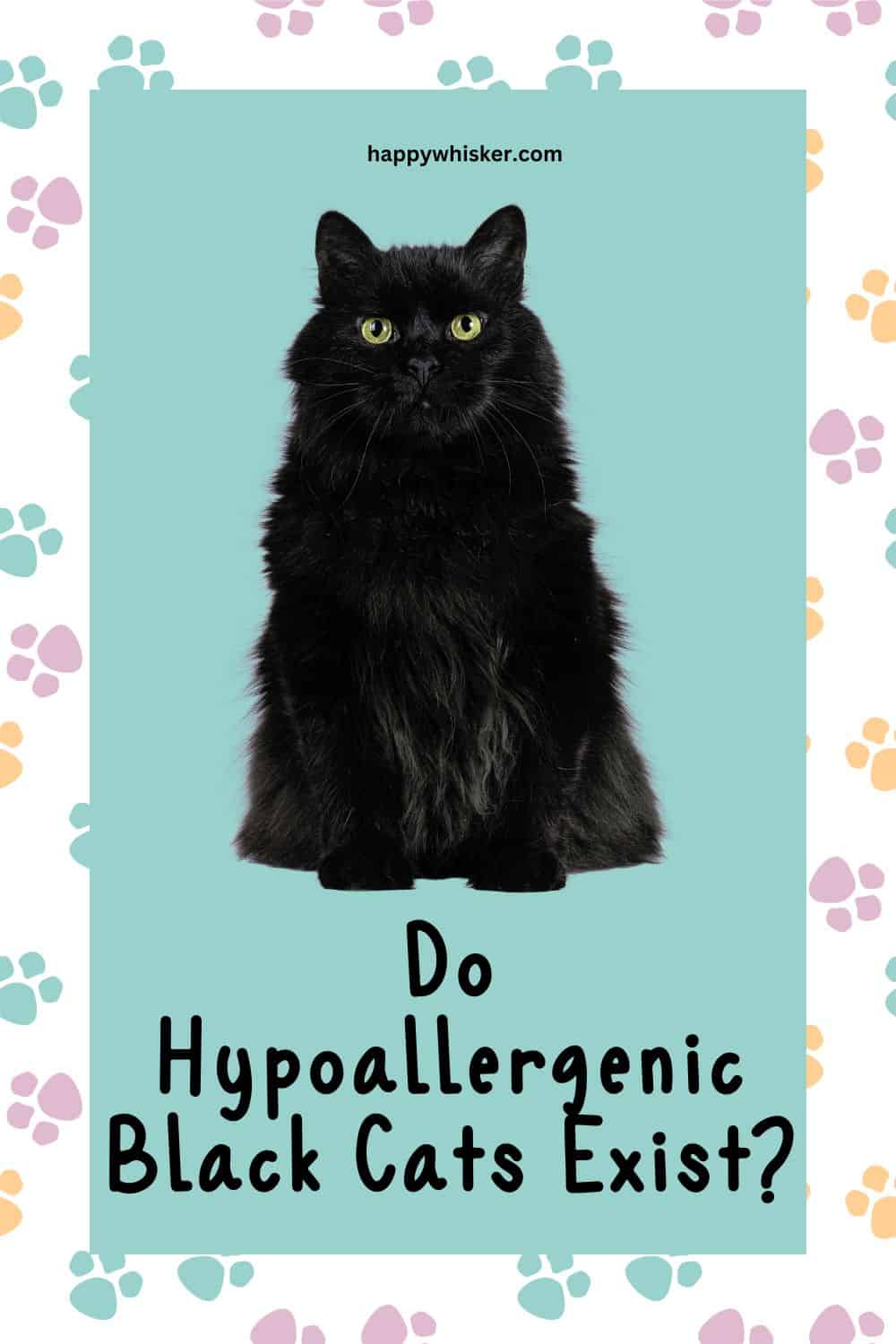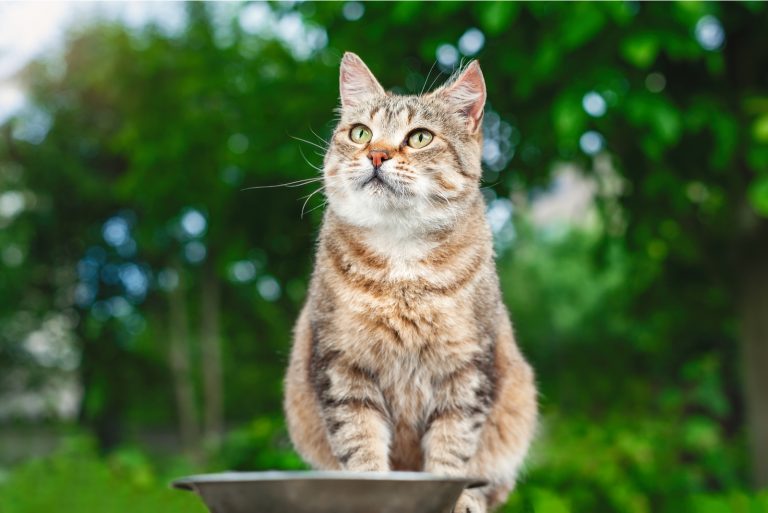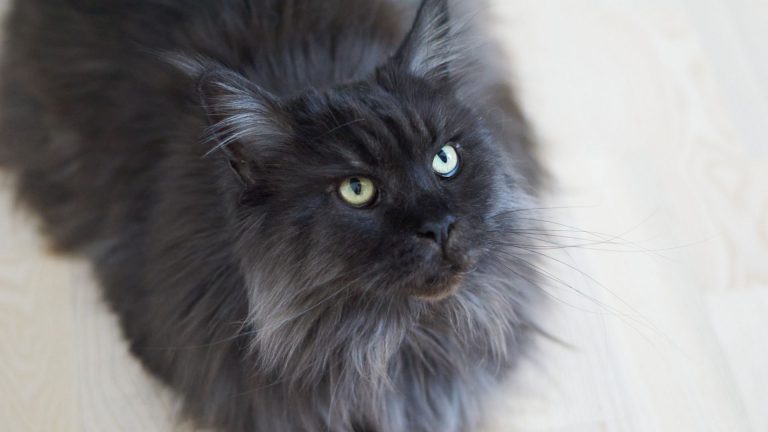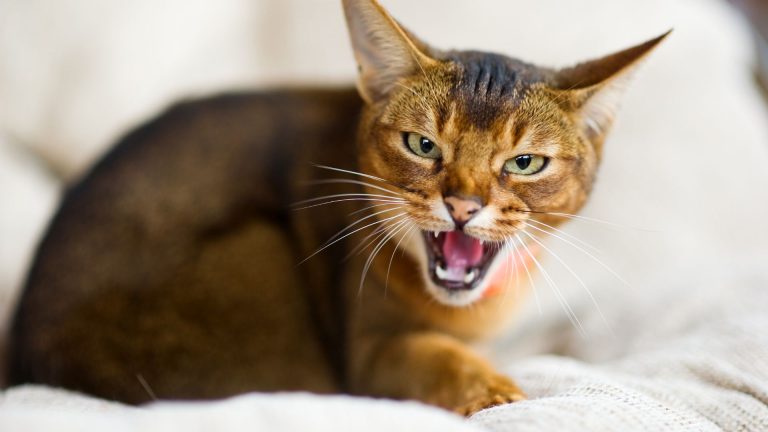Do Hypoallergenic Black Cats Exist? Assessing 22 Cat Breeds
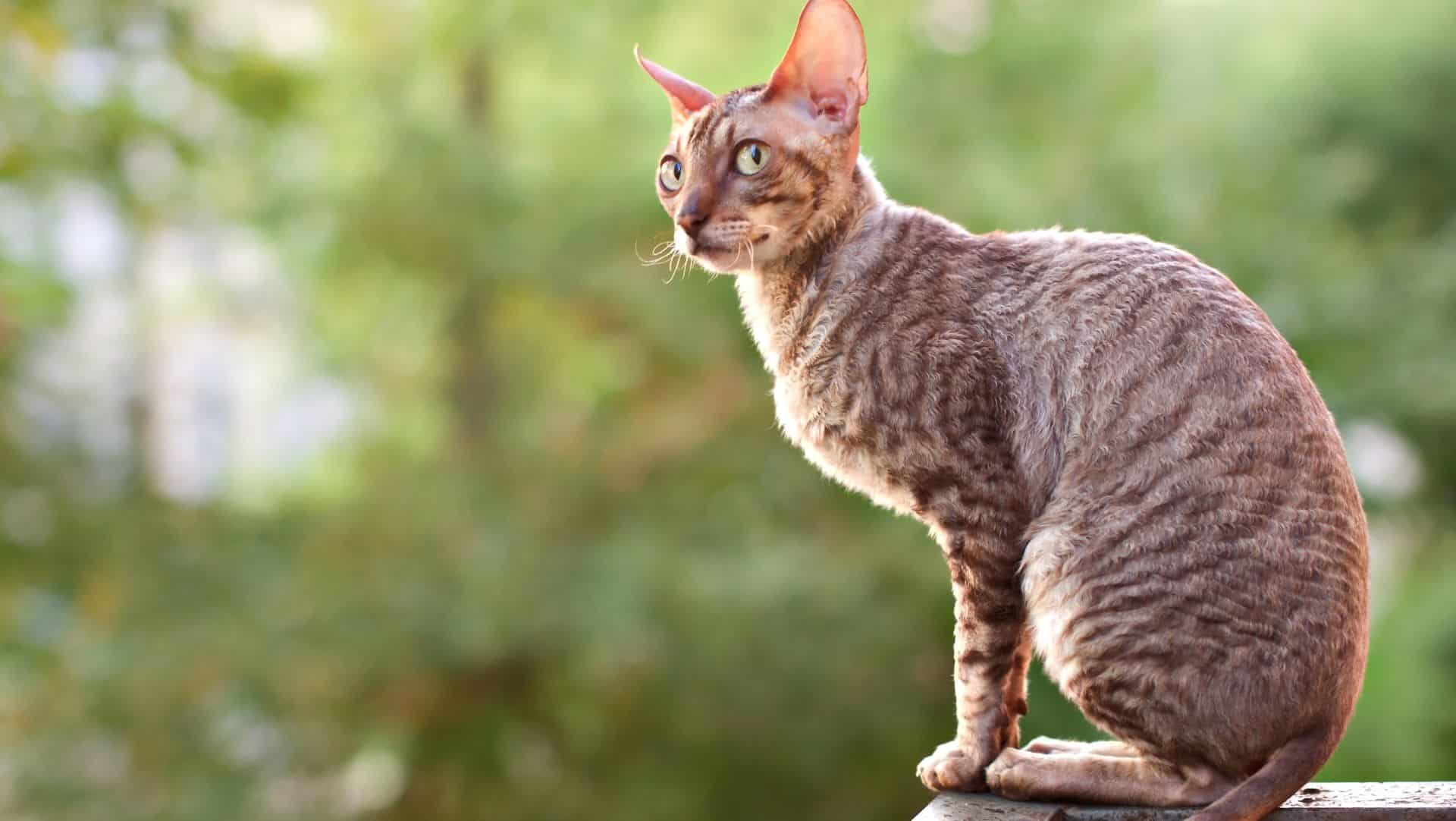
If you know you’re allergic to cats, or one of your household members is, and you want to become a cat owner, you must be looking for a hypoallergenic cat. These cats are less likely to cause allergic reactions in allergen-sensitive individuals.
Black cats are beautiful, but there aren’t that many cat breeds with black-coated members! There are 22 cat breeds recognized by the Cat Fanciers’ Association (CFA) that can have solid black coats.
So, how many of these 22 black cat breeds can be considered hypoallergenic? Which cat breed would be the best choice for you? You’ll have to read on to find out!
Do Hypoallergenic Black Cats Exist?
This is a tricky question to answer, considering the likelihood of a cat causing an allergic reaction depends on the cat’s breed.
As you already know, black cats are not a breed by themselves but a group of cats composed of many cat breeds. The CFA lists 22 cat breeds that can have solid black coats.
So, are there any hypoallergenic cat breeds among the 22 black cat breeds? Yes, among the 22 black cat breeds, some of them are considered to be hypoallergenic.
Let’s Clear Up One Thing First: What Are Hypoallergenic Cats?
Many people mistakenly use hypoallergenic as if it means non-allergenic.
Let’s look at Merriam-Webster’s definition of hypoallergenic: having little likelihood of causing an allergic response, and non-allergenic – not causing an allergic reaction.
There is no such thing as a non-allergenic cat breed, as every cat produces cat allergens capable of causing an allergic reaction in sensitive individuals.
However, hypoallergenic cat breeds do exist, meaning some cats are less likely to cause an allergic reaction than others.
Not all cat breeds produce and distribute the same amount of the cat allergen, meaning some cats are more likely to cause allergies than others.
Evaluation Of All 22 Black Cat Breeds
The Journal of Allergy and Clinical Immunology published research that states that the color of a cat’s coat does not correlate with the amount of Fel D 1 allergen produced.
Allergen production is entirely dependent on the cat’s breed. Therefore, let’s discuss each breed of a black cat and its potential to trigger an allergy.
American Bobtail

The American Bobtail is a medium to a large cat that makes a great lap cat, famous for lacking a proper cat tail!
They are great companions; you can even teach them to walk nicely on a leash, but they’re not a good fit for allergy sufferers.
This cat breed sheds moderately, but they are still not considered hypoallergenic.
American Curl
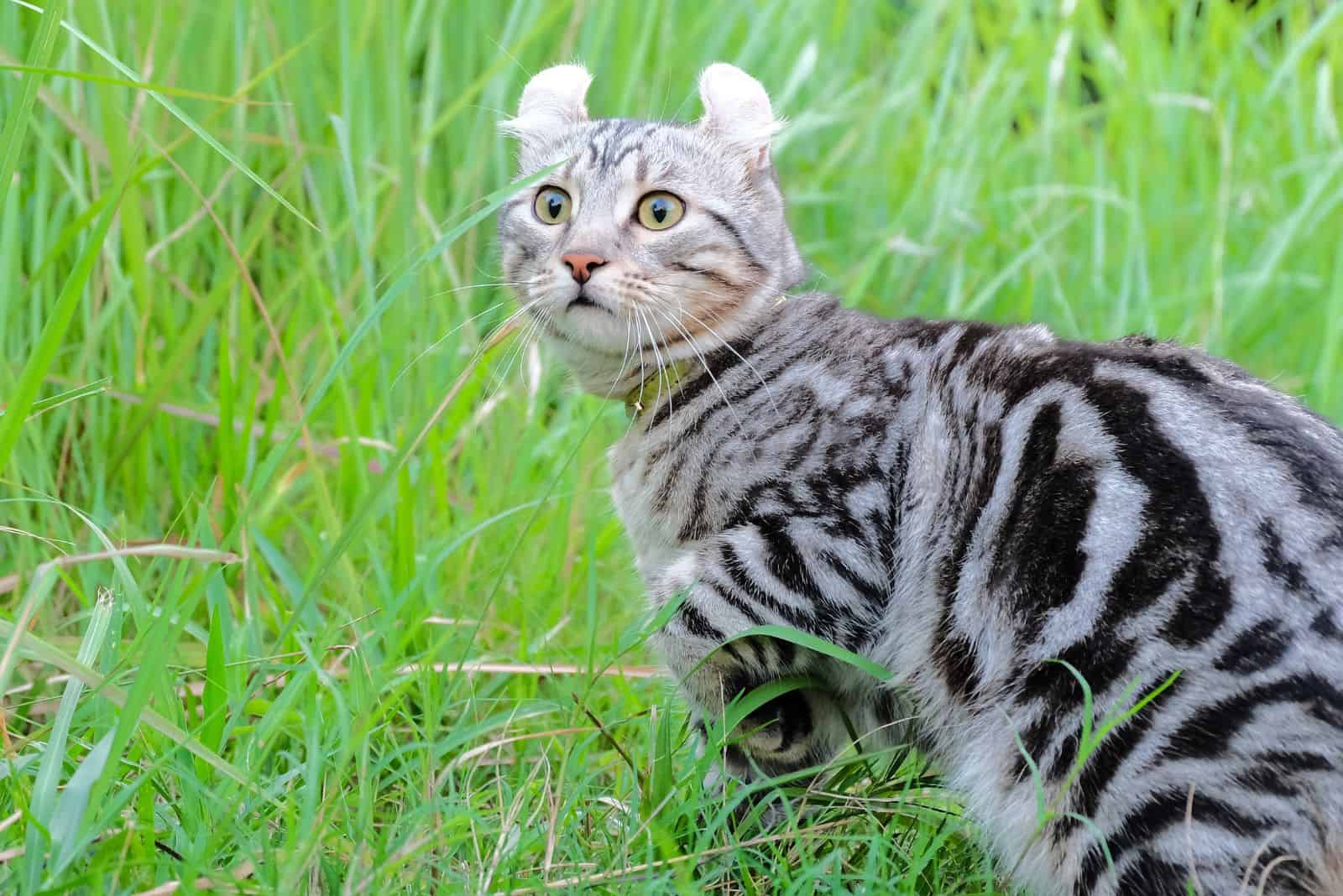
American Curl cats are small to medium cats with short to semi-long coats that come in many colors and patterns.
They are most famous for their adorable curled-back ears and kitten-like demeanor, even when they’re adults.
They are not hypoallergenic.
American Shorthair
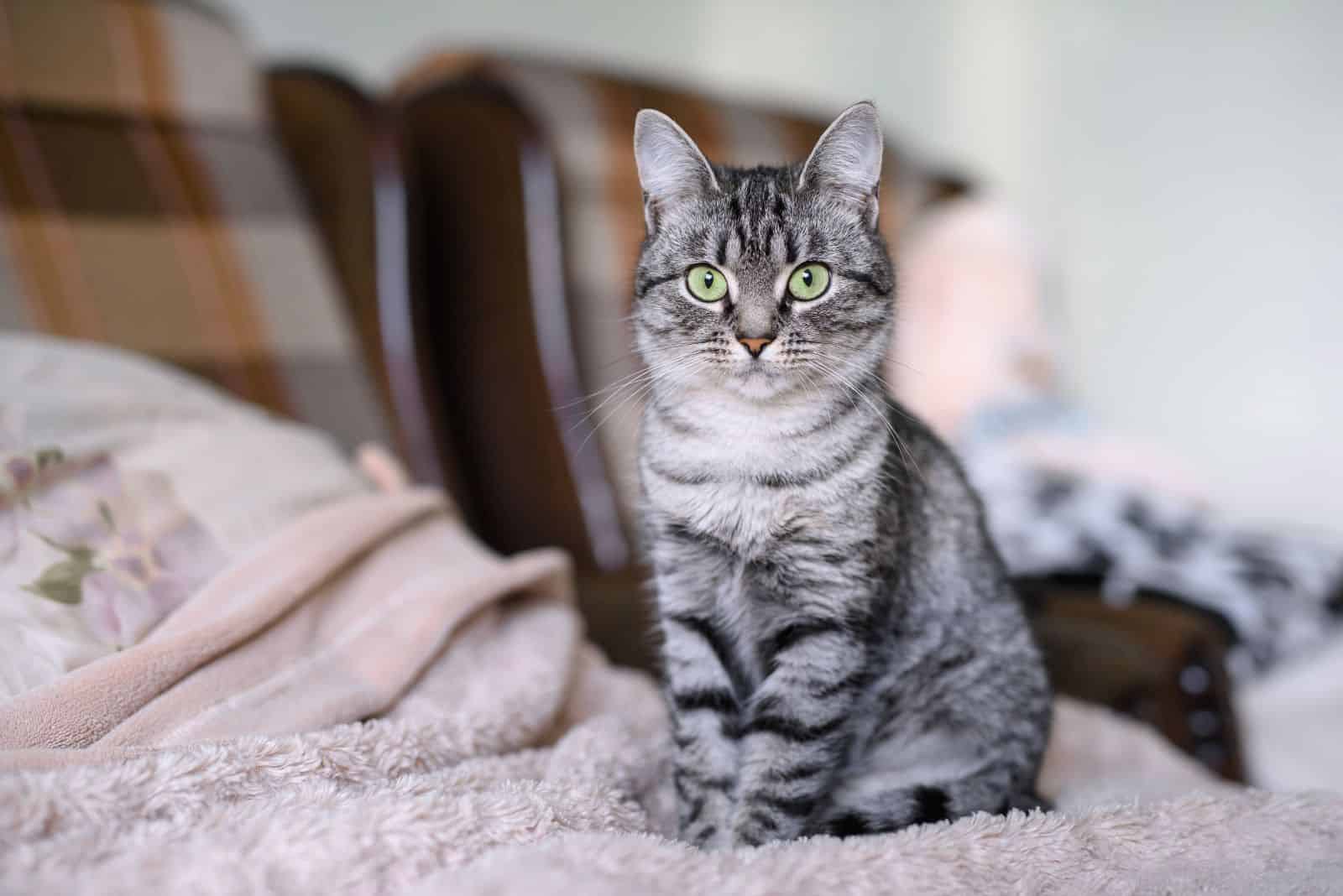
This medium-sized cat is a fantastic family cat known for being a gentle and loyal companion.
They have short coats and can come in any coat color or pattern (although tabby is the most common).
They are not considered to be hypoallergenic.
American Wirehair
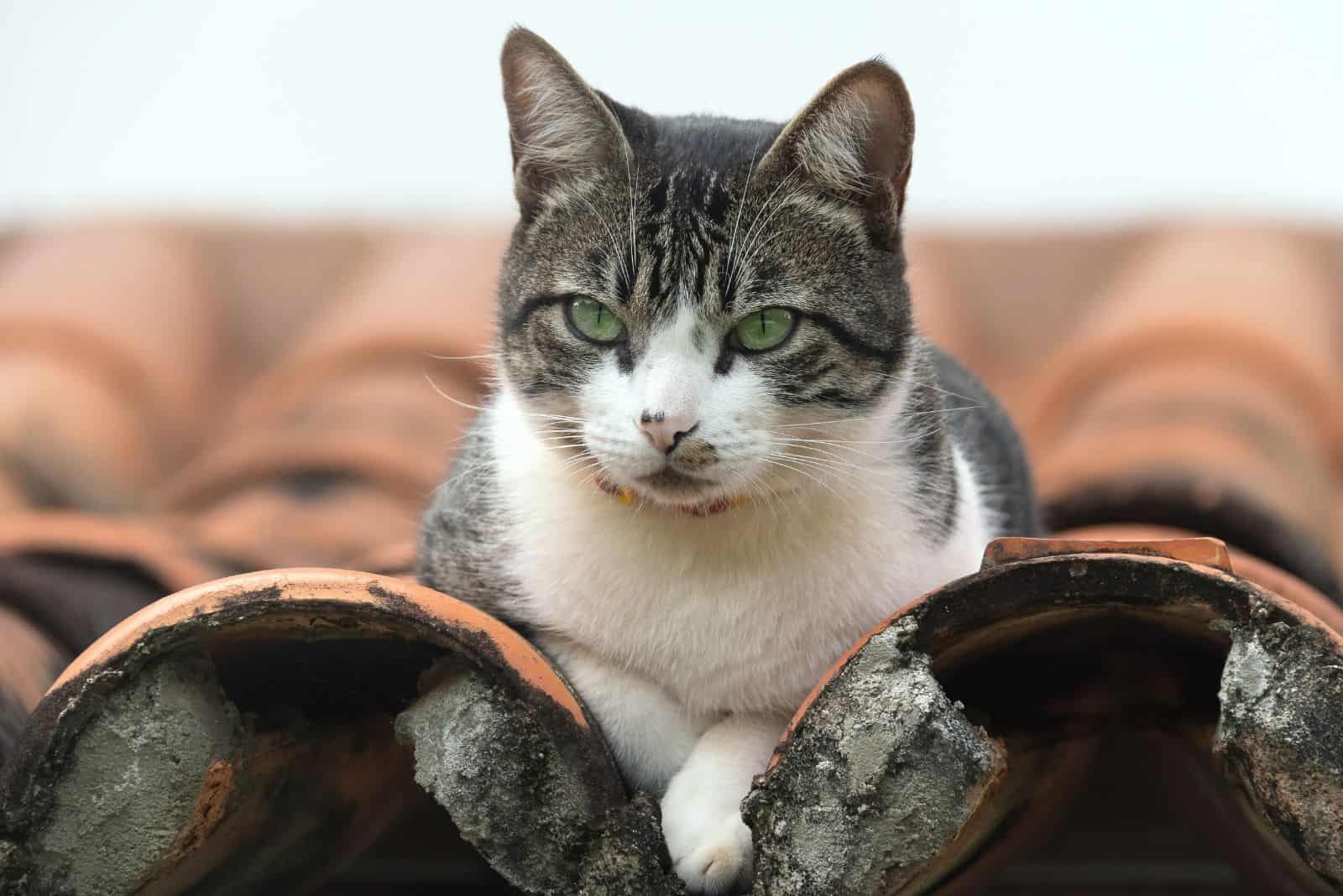
Many people haven’t even heard of this cat breed, which is understandable, considering it’s a recently developed one.
American Wirehair cats are a bit shy when meeting new people, but they will quickly show you their affectionate side!
These kitties have medium-length coats that don’t require a lot of maintenance. Despite this, they are not hypoallergenic.
Bombay

Bombay cats are famous solid black cats with piercing copper or green eyes.
Their coat is short, soft, and silky, meaning they’re very easy to groom. They also shed very little, making them the perfect pets for some cat owners.
Sadly, they’re also not hypoallergenic, as they produce about the same amount of cat allergen as most other cats.
British Shorthair

British Shorthair cats are shorthaired, medium to large-sized cats with round faces, which makes them hard to resist!
They’re very affectionate and easy-going, making them excellent family cats.
Are they hypoallergenic? I’m sorry to say, but they’re not.
Cornish Rex
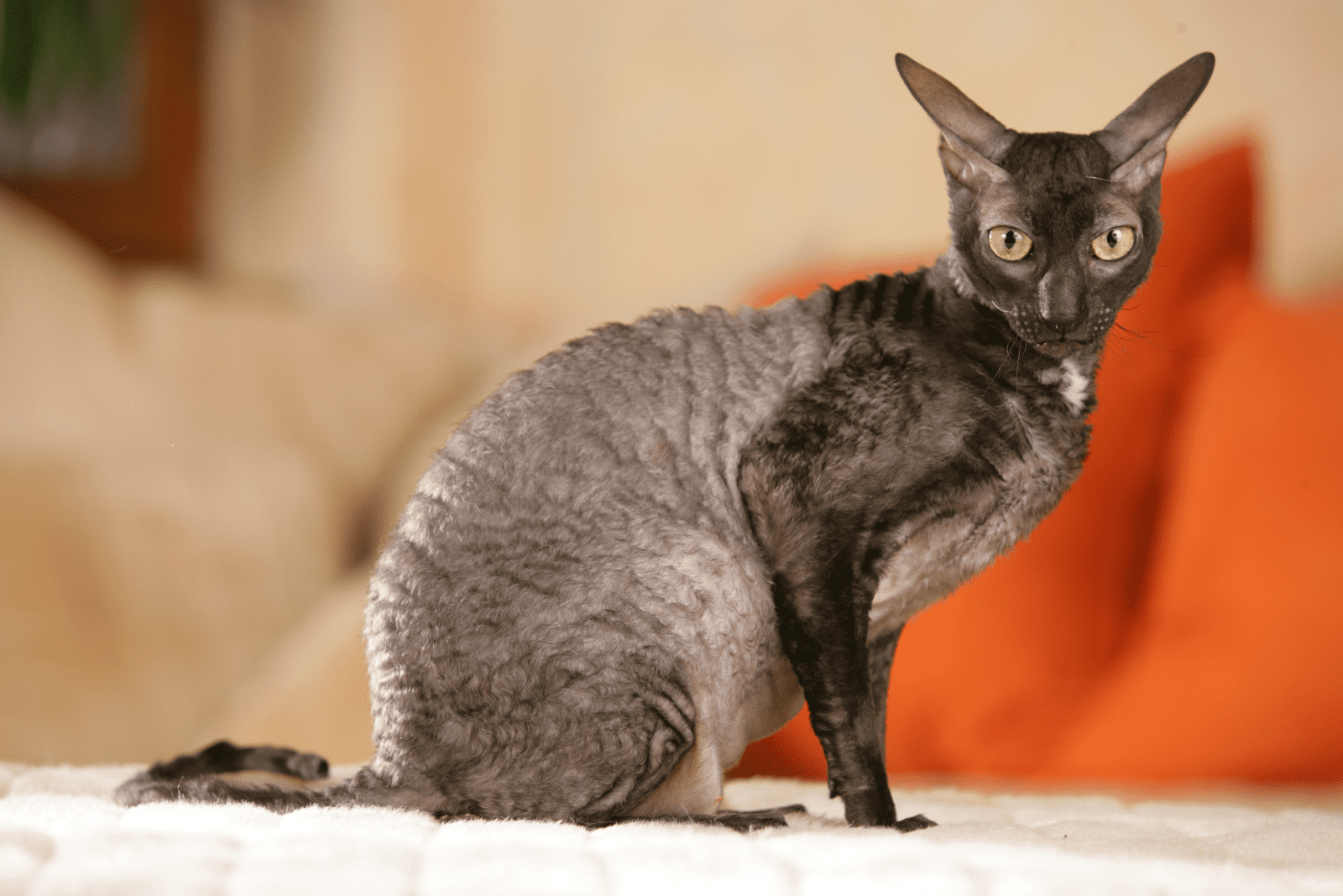
Cornish Rex cats are small to medium-sized cats famous for their extremely soft, short, unusually wavy coats and lack of an undercoat.
They are very active and love climbing and running around. They love interacting and are perfect cats for energetic cat owners.
The Cornish Rex has a moderate probability of causing an allergic reaction, so they are our first hypoallergenic black cat on this list!
Devon Rex
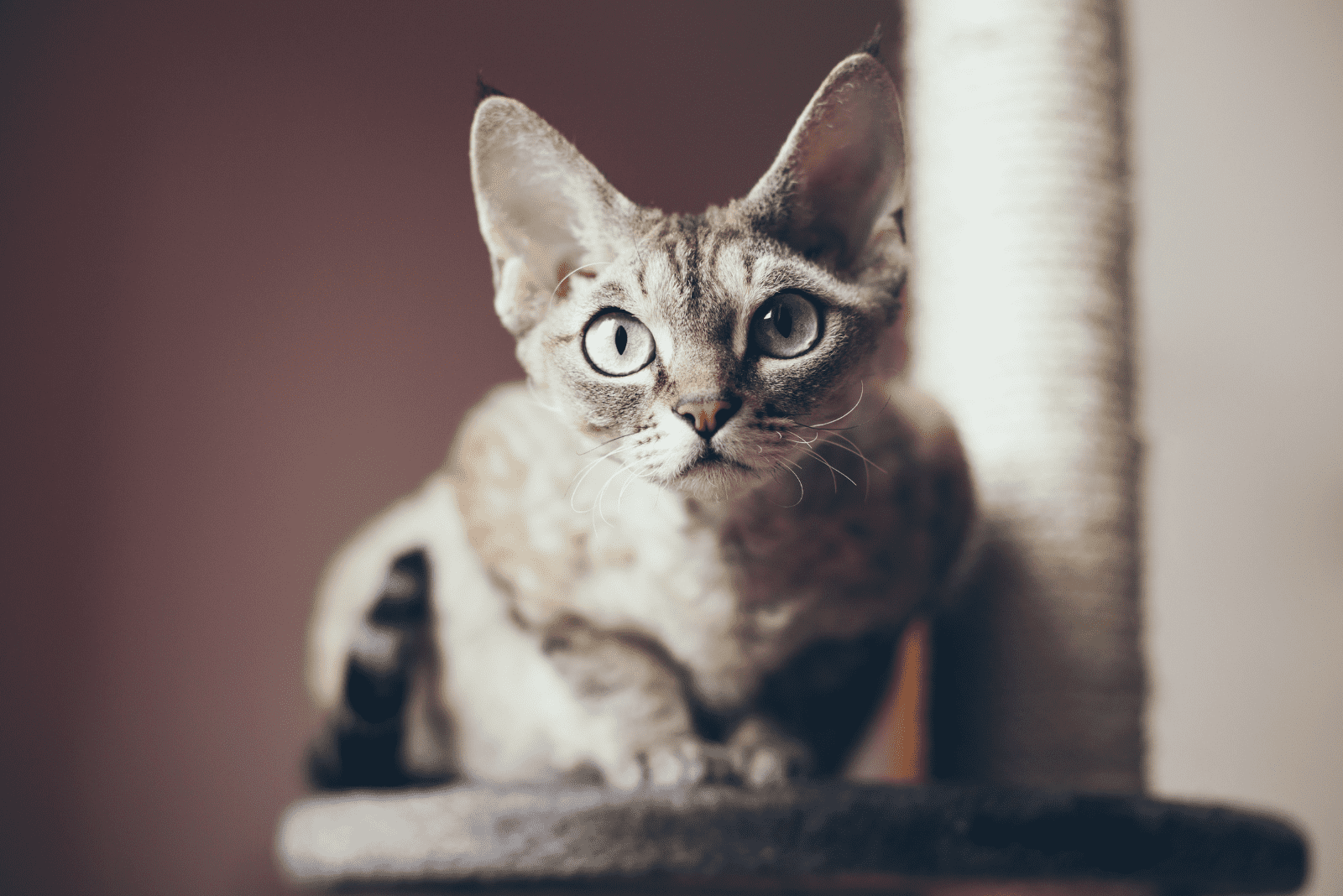
This cat breed is famous for its unusual appearance characterized by low-set, large ears, huge eyes, and a curly coat.
Devon Rex is small to a medium-sized cat known as “the pixie” of the cat world. They’re very playful and love to socialize!
Luckily for all allergy sufferers, this cat breed is considered to be hypoallergenic!
Exotic Shorthair
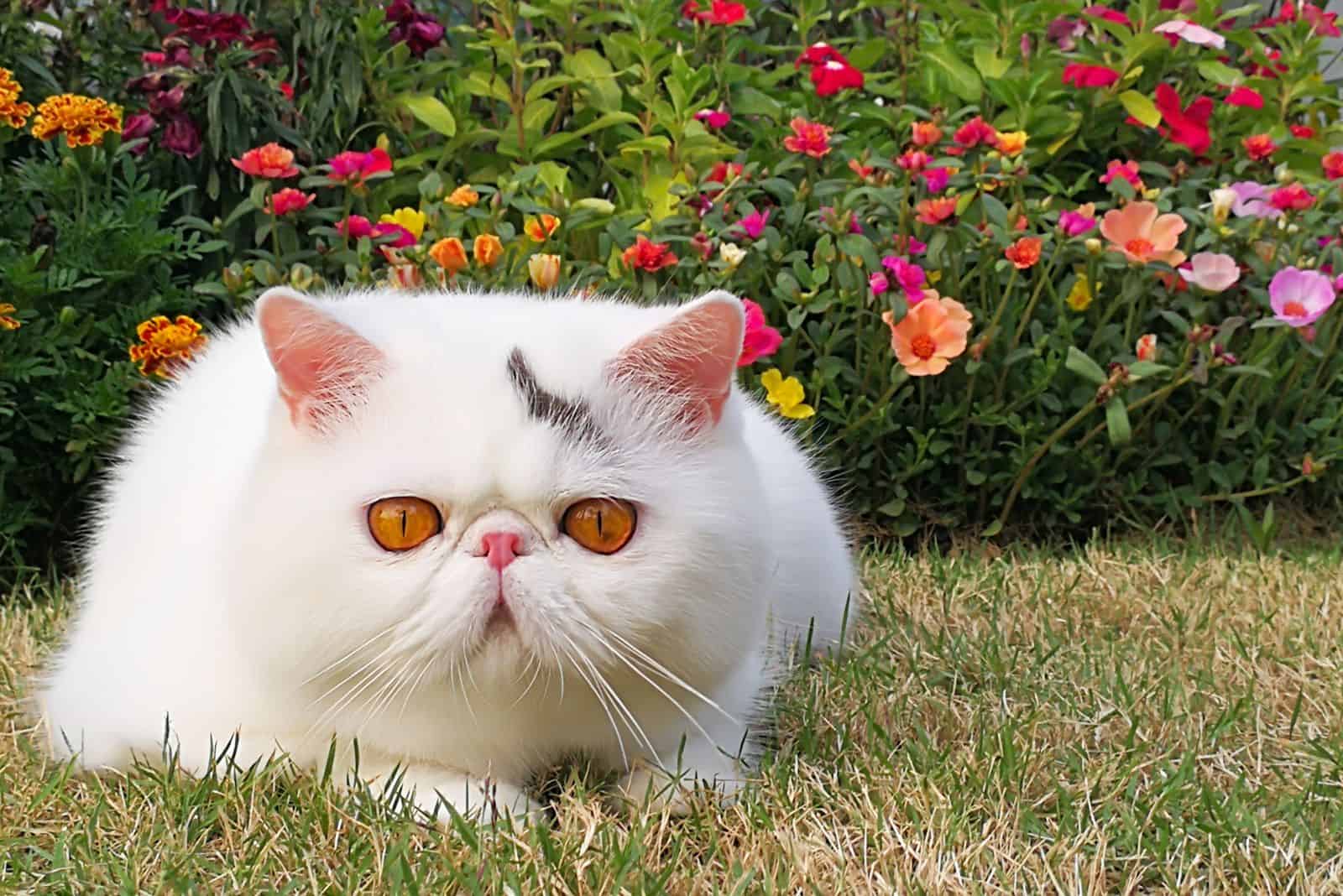
Exotic shorthair cats are medium-sized, stocky cats and their dense, short fur is very easy to groom.
They’re famous for being lazy but very sweet, and prone to displaying affection! Many owners love them for their laid-back attitude!
Unfortunately, they are not hypoallergenic.
Japanese Bobtail
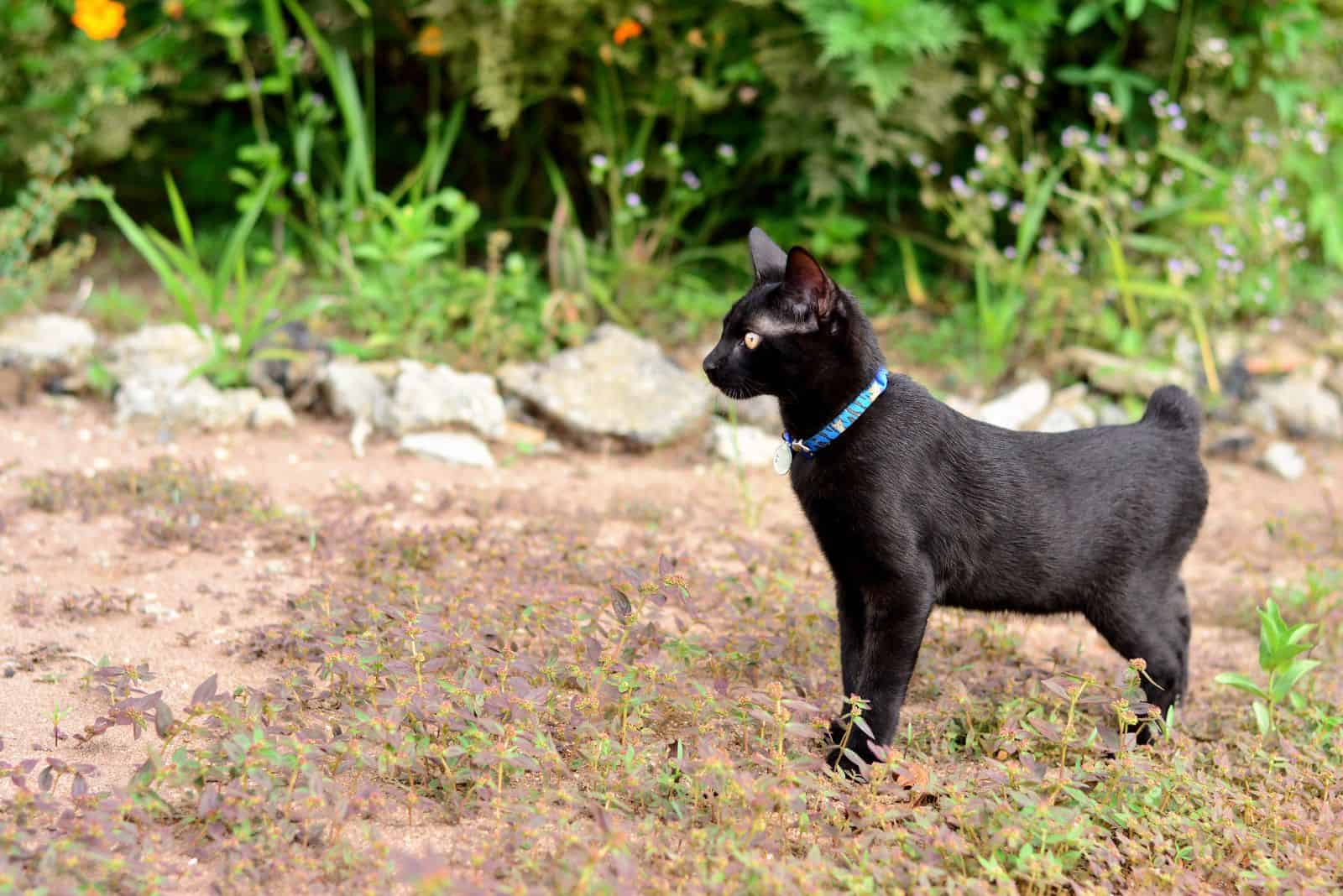
Japanese bobtail cats are very quick learners! They adapt quickly and learn how to fetch in no time, which makes sense, considering they’re very intelligent.
These cats are small, medium-shedding cats that have smooth, silky coats.
Unfortunately, they are not hypoallergenic.
LaPerm
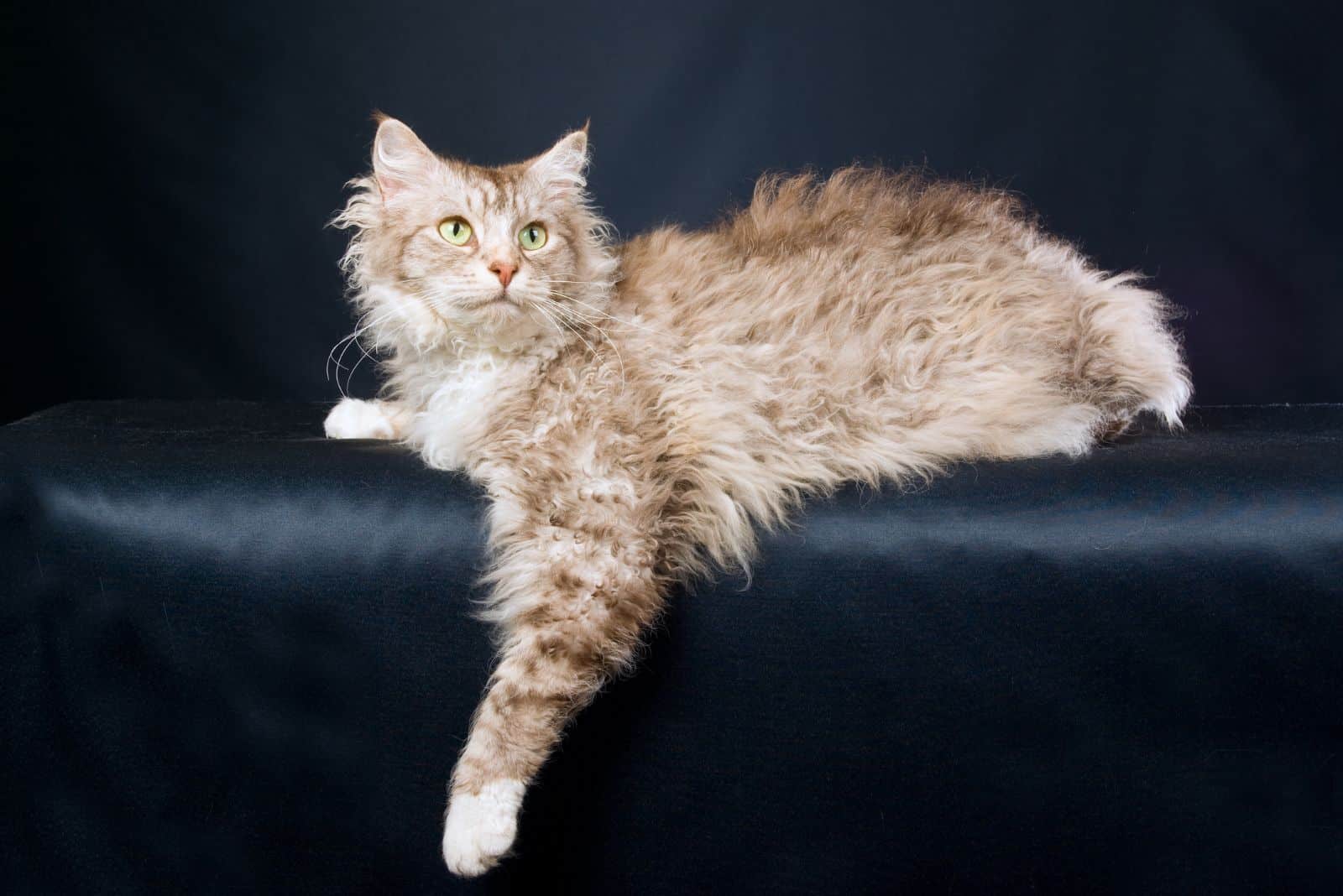
LaPerm is a relatively new cat breed which only a few people are acquainted with. They are very famous for their wavy to curly hair!
They love a good play date; they’re very active and have high exercise needs.
Unfortunately, they are not hypoallergenic.
Maine Coon
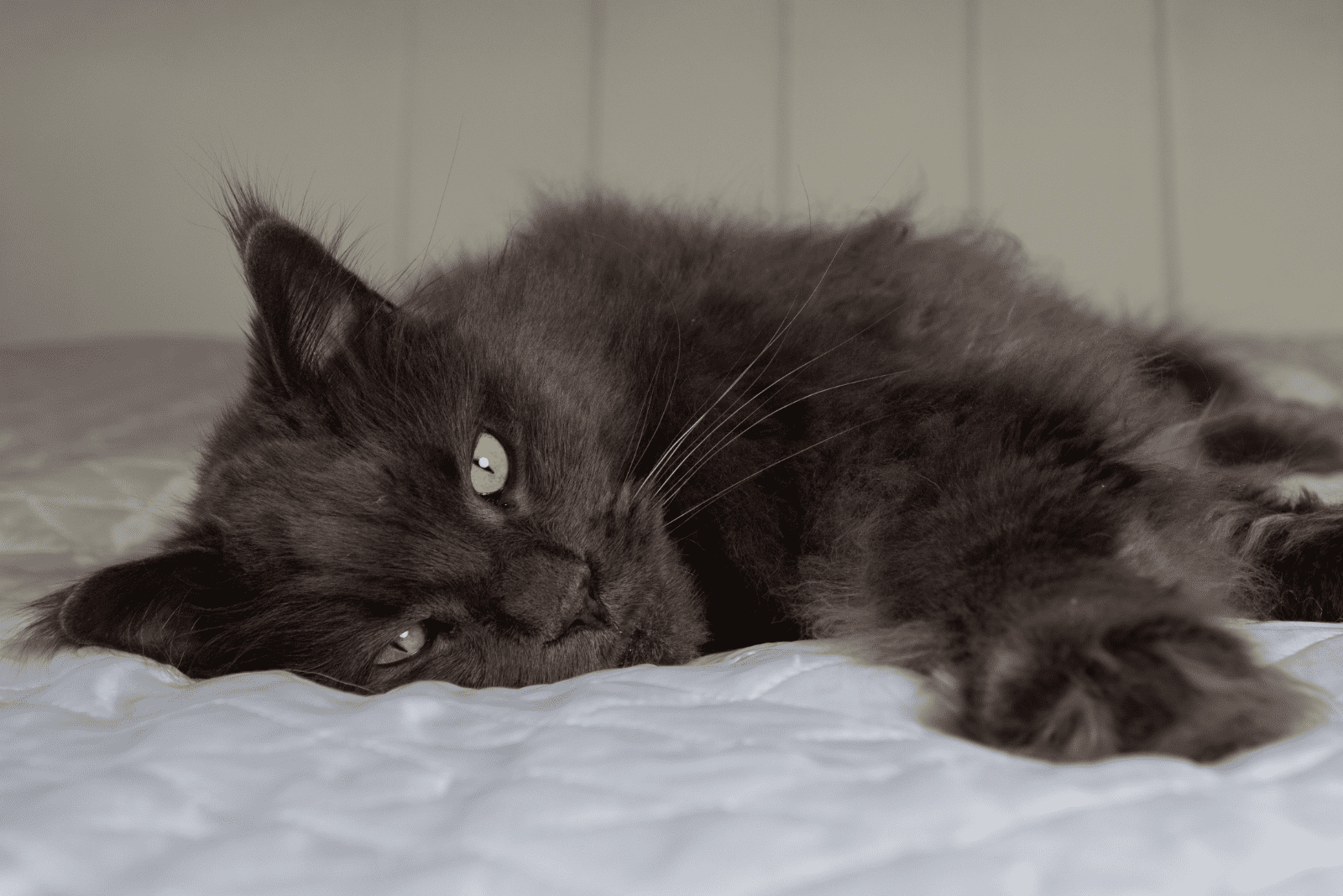
Maine Coons are famous for their dog-like behavior. They’re friendly, laid back, and intelligent. They’re great with kids, hence the nickname, ‘gentle giants’.
They’re pretty large cats with a beautiful long coat that requires regular grooming
Are Maine Coons hypoallergenic? They are considered somewhat hypoallergenic.
Manx

Manx cats can be longhaired or shorthaired, medium-sized cats that can come in various colors and patterns.
They’re famous for being excellent jumpers and are highly trainable. They’re also very affectionate and great with kids and other pets.
However, Manx cats are not hypoallergenic.
Norwegian Forest Cat

The Norwegian Forest cat is a large, grey longhaired cat that is known to be one of the largest felines out there.
They are very intelligent and energetic, so they require a lot of playtime with their owners!
Many report that these cats do not produce a lot of cat allergens, making them suitable for owners whose allergy symptoms are not so severe.
Oriental
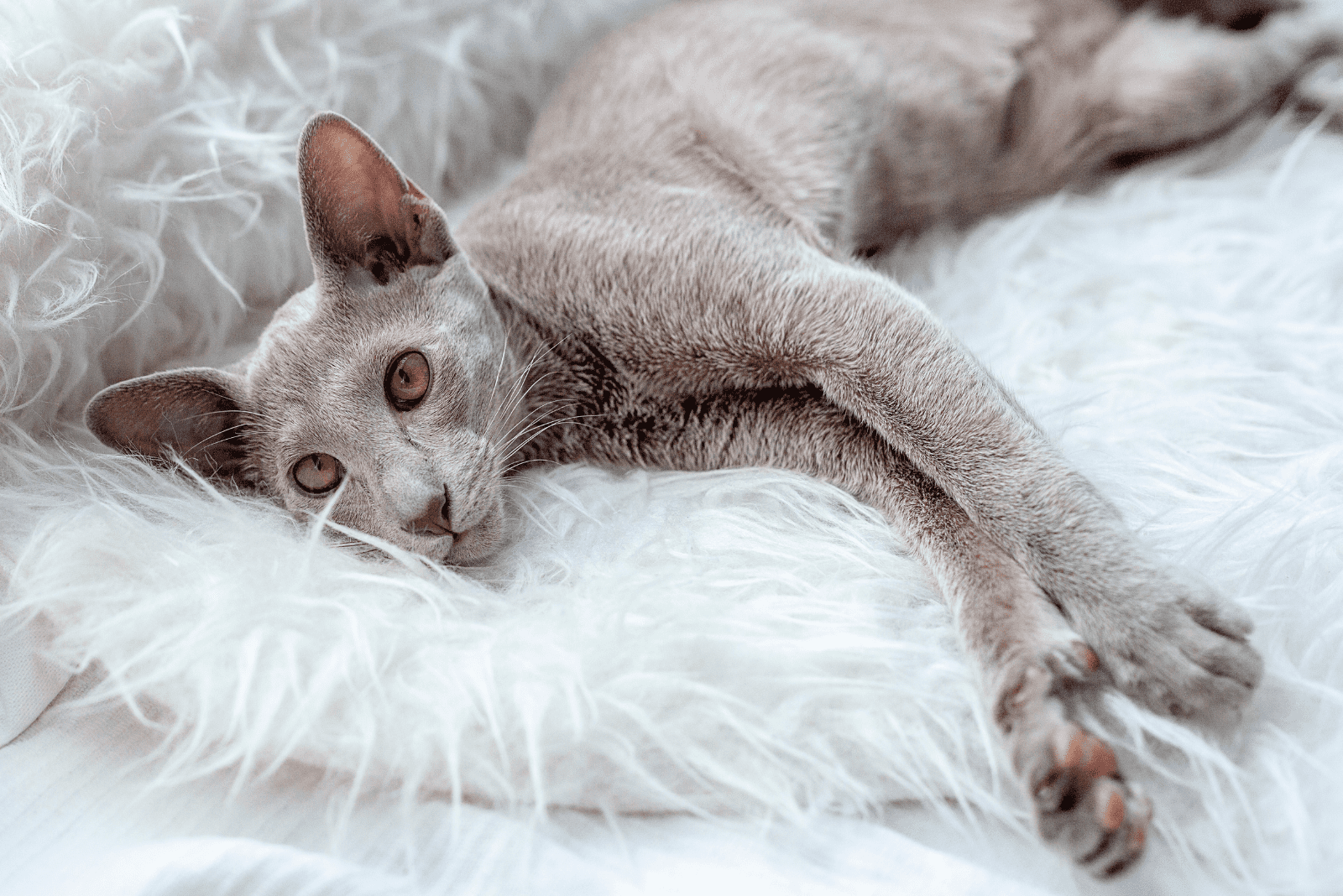
Oriental cats can have longhair or short hair and are famous for their fine coat.
Oriental Shorthair cats and Oriental Longhair cats are intelligent, active, and friendly.
They are considered somewhat hypoallergenic, as they produce lower amounts of cat allergen than many other cat breeds.
Persian

This cat breed is one of the most popular pedigree cat breeds in the cat world. Persian cats are famous for their round, flat face.
Their fluffy coat comes in a large variety of colors and patterns. They’re sweet cats that get along with kids amazingly!
Persian cats are not hypoallergenic.
RagaMuffin

A super plush coat is the trademark of these adorable kitties. They’re large, longhaired cats whose coats come in many colors and patterns.
They’re smart and great with kids and other pets in the household.
However, Ragamuffin cats are not hypoallergenic.
Scottish Fold

Scottish fold cats are adorable kitties famous for their characteristic folded ears. A gene mutation causes this trait.
They love playdates but are moderately energetic. They are friendly and love showing affection!
They are not hypoallergenic, and allergy sufferers should look at other cat breeds when getting a pet cat.
Selkirk Rex
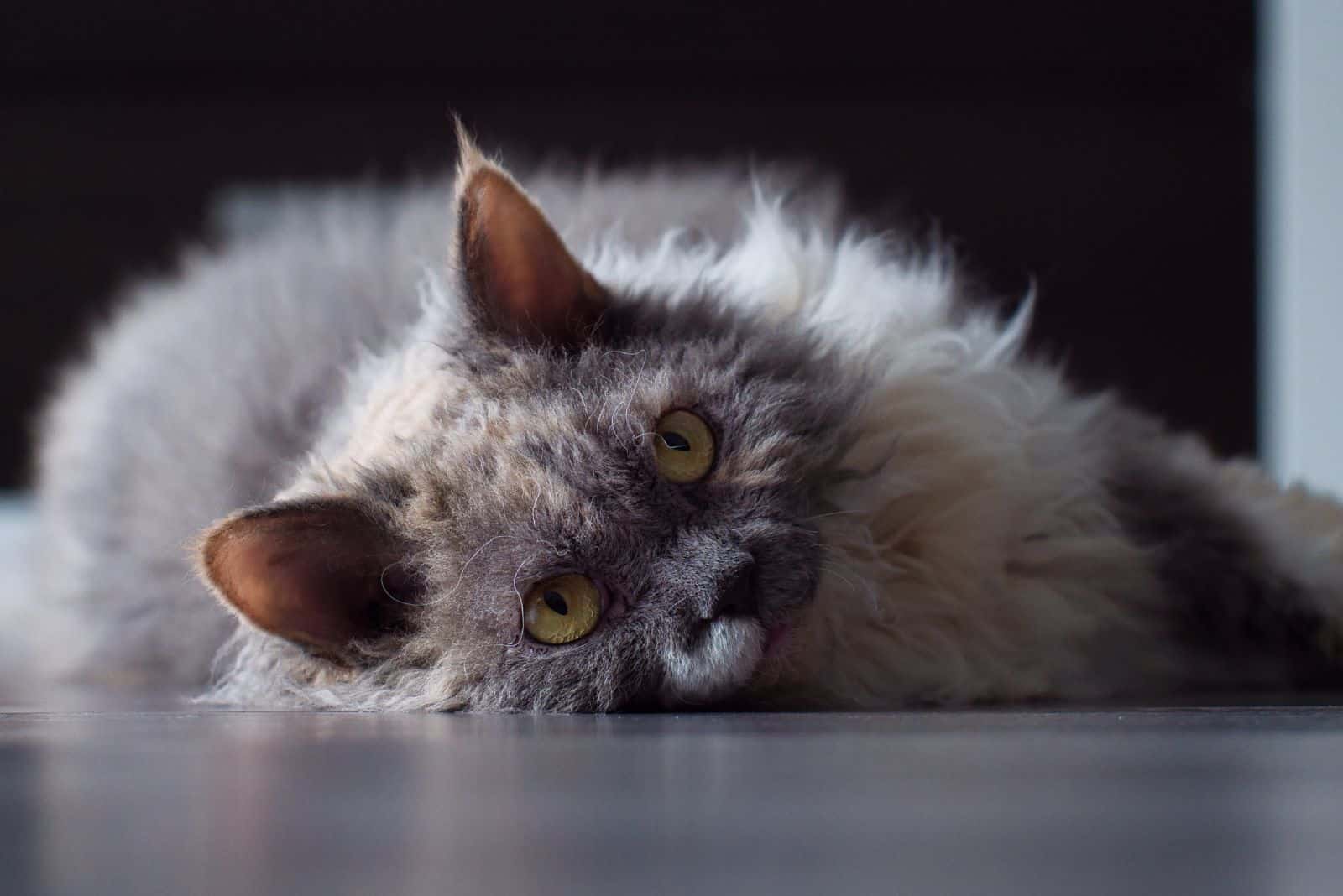
Most of us know this cat breed due to its curly coat in various colors and patterns.
They’re medium to large cats that love interaction. They’re known for being silly and affectionate.
Selkirk Rex cats are not considered to be hypoallergenic.
Siberian
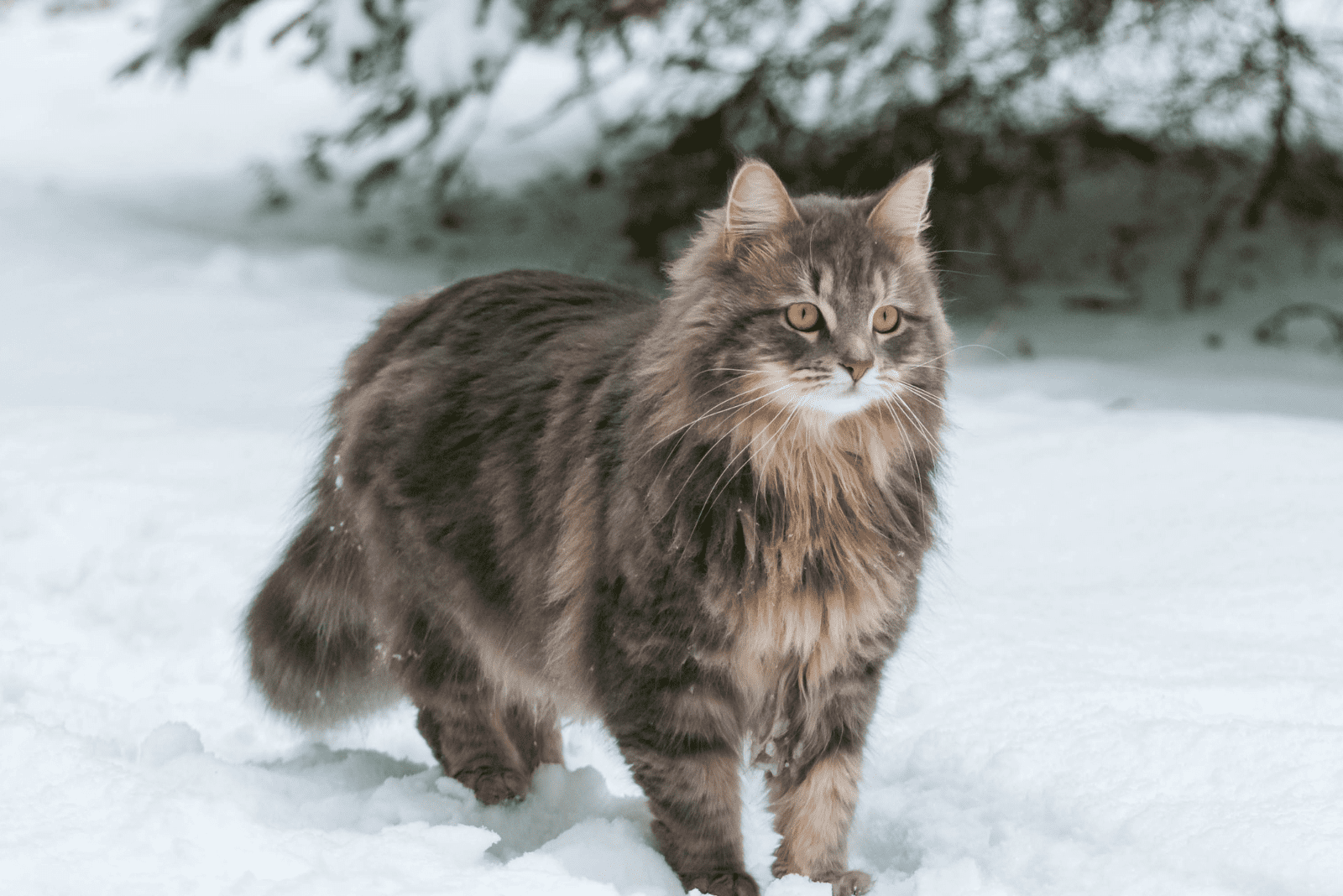
These medium-sized, semi-longhaired cats have a triple coat that protects them from the worst winters.
They’re very affectionate and a great addition to households with kids and other pets.
Siberian cats are hypoallergenic, producing lower levels of cat allergen Fel D1 than many other cat breeds.
Sphynx
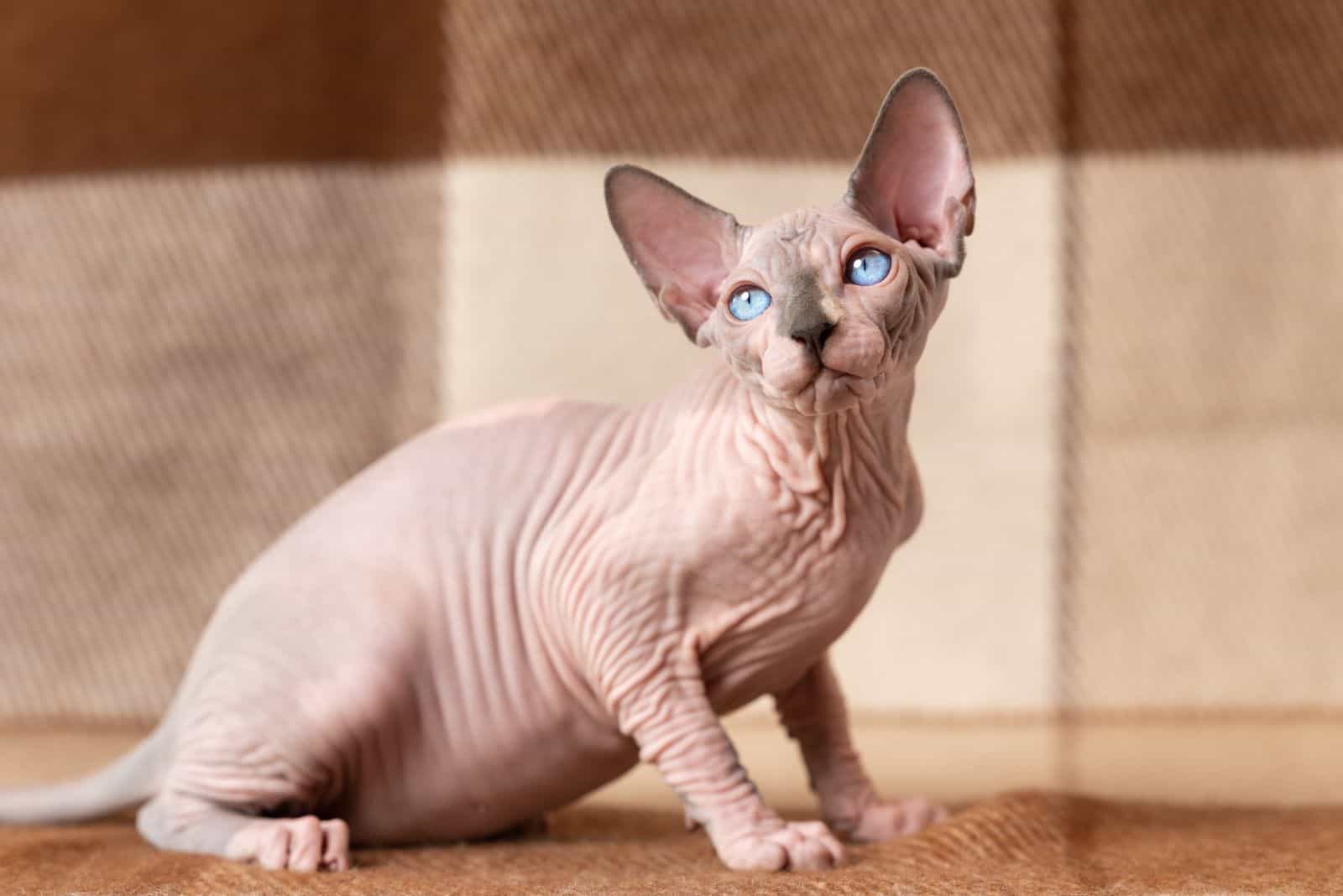
Sphynx cats are known as hairless, even though they have a suede-like coat.
They’re playful and love socializing, but they’re also huge fans of their owner’s laps and cuddles!
Sphynx cats are known as a low-maintenance hypoallergenic cat breed, so they’re the best cat choice for allergy sufferers.
Turkish Angora
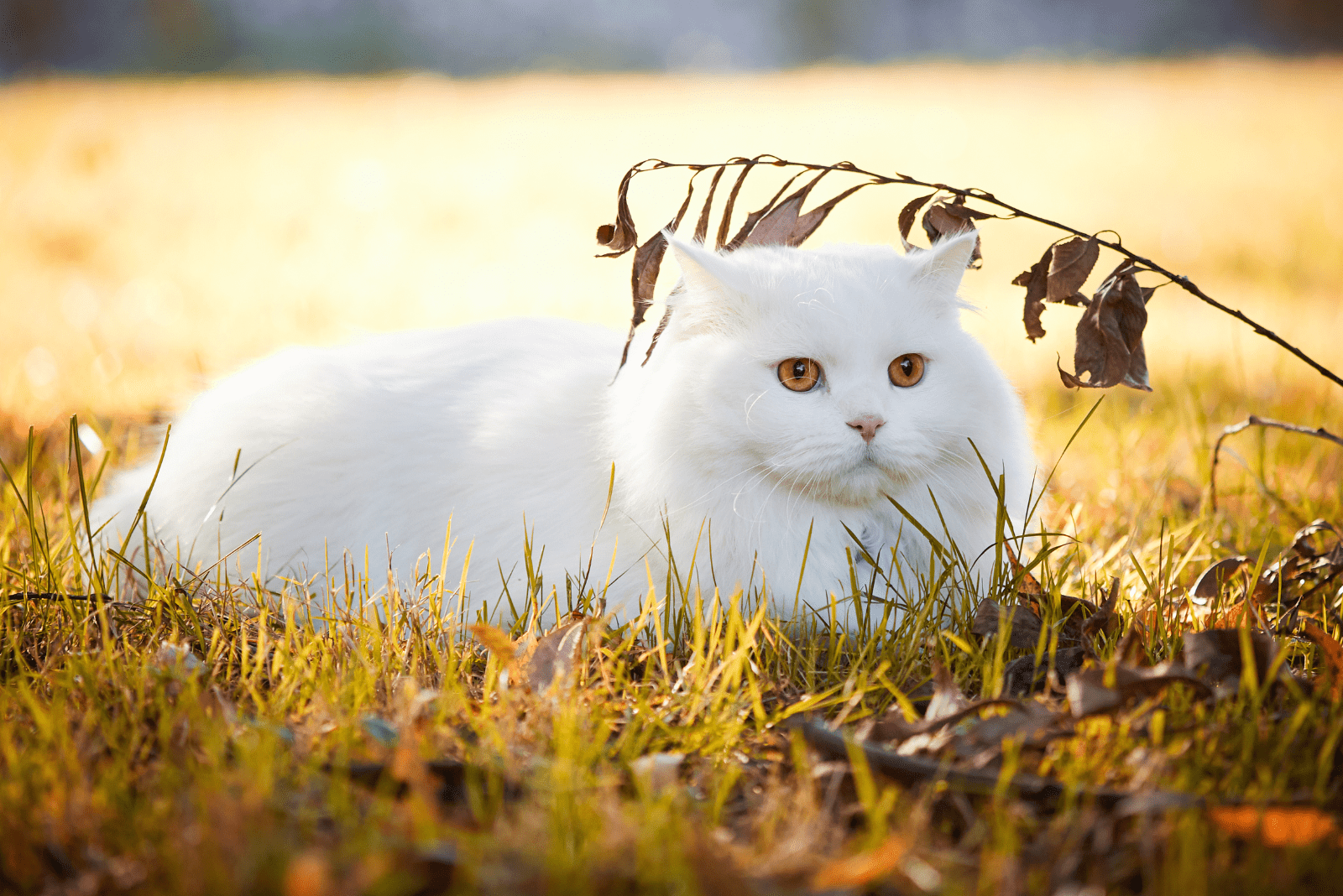
Traditionally white, Turkish Angora cats can have other coat colors, too (such as black).
They’re famous for being somewhat clingy and like human interaction. They’re also quite energetic.
There have been mixed reports about this cat breed; some say they’re hypoallergenic, while others disagree.
So, How Many Breeds Of Black Cats Are Hypoallergenic?
Eight of the 22 cat breeds are thought to be hypoallergenic:
🐾 Cornish Rex
🐾 Devon Rex
🐾 Maine Coon
🐾 Norwegian Forest Cat
🐾 Oriental
🐾 Siberian
🐾 Sphynx
🐾 Turkish Angora
Out of these eight cat breeds, the Cornish Rex, the Devon Rex, and the Sphynx are well-known for being hypoallergenic. In contrast, other cats have more divided public opinion about whether they are hypoallergenic or not.
How Do I Know If I’m Allergic To Cats?
Skin-prick tests performed by an allergist are a sure way to know if you’re allergic to cats or not.
But if you’re not up to visiting an allergist, it’s practical to watch your body’s reaction after coming into contact with a cat.
Symptoms of a cat allergy are:
• Coughing
• Sneezing
• Stuffy nose
• Runny nose
• Itchy nose
• Watery eyes
• Irritated eyes
• Itchy skin
• Rash on skin that has been in contact with a cat
• Asthma attack (in people that suffer from asthma)
• Anaphylaxis (in the most severe cases, this can be life-threatening)
It’s safe to say you’re allergic to cats if you experience any of these symptoms of cat allergy.
Some people develop symptoms moments after encountering a cat, while for others, it takes some time. It’s also possible to have symptoms even after a cat’s gone. This is because even though the cat is gone, there are “left-over” cat allergens on the floor, furniture, clothes, and even air.
Of course, the severity of symptoms varies from person to person. Not every person with cat allergy will show the same symptoms or have the same severity. Essentially, some people are more allergic and have more severe symptoms than others.
The difference in the severity of cat allergy symptoms in different people still needs to be explained, and more scientific research is required to determine why this is the case.
How Do Cat Allergies Work?
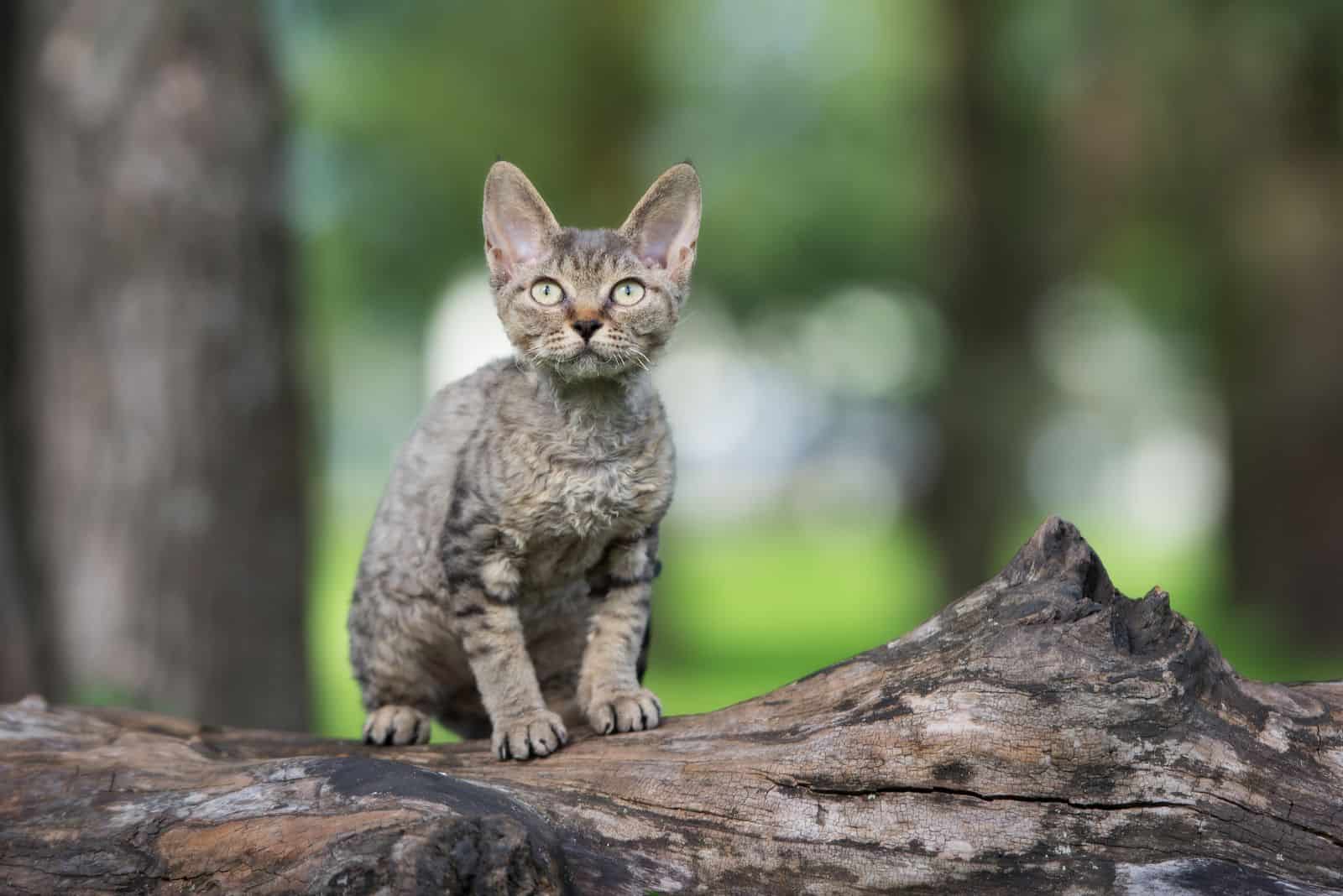
Many people believe that they’re allergic to cat hair. This is not entirely true, but not completely false either; so cat allergies’ mode of action will be explained in a separate section in this article.
So, how do cat allergies work?
What Causes An Allergic Reaction In Allergy Sufferers?
A cat allergen known as Fel D1 is a protein that causes allergic reactions in sensitive people. These individuals’ immune systems are overly sensitive and mistake the Fel D1 protein as a harmful invader of the body.
As a response to the invader, the immune system creates a storm of antibodies that attacks the Fel D1 protein. The sudden and overwhelming amount of antibodies triggers the allergy symptoms that allergic individuals experience upon contact with Fel D1.
What Exactly Is Fel D1?
Fel D1 is a cat allergen, a protein produced by all cats, no matter their age, gender, or breed. The function of this protein in cats is still unknown, which is particularly interesting. However, we know that this protein is mistakenly recognized as “the bad guy” by bodies of allergy sufferers.
Where Can Fel D1 Be Found?
Fel D1 is a protein primarily found in cats’ saliva, dander, and urine. Naturally, every surface on which a cat’s saliva, dander, and urine can be found (even in traces) will contain Fel D1.
When a cat grooms, it will transfer saliva to its fur, meaning the cat’s hair contains Fel D1. This explains the common misconception that people are allergic to cat hair – they’re not. Allergy-prone individuals are, in fact, allergic to the Fel D1 cat allergen that can be found on cat hair.
A cat’s litter box contains Fel D1, as a cat’s urine contains small amounts of this protein.
When it comes to cat dander, these dead skin flakes can be found everywhere. They are airborne and tend to stick to surfaces they land on, making them common in a house with a pet cat.
Is It Possible To Own A Cat If You’re Allergy-Prone?
The answer to this depends on the severity of your allergies.
If you’re very sensitive to even a tiny amount of cat allergen, owning any cat is not recommended. The presence of a cat will always trigger your immune system into action, and that can lead to the presence of constant, potentially dangerous, allergy symptoms.
If you’re not so sensitive, and your allergy symptoms are mild, you’ll likely lead a nice life owning a cat. However, this does not mean no compromises! You will have to follow several guidelines, as I will explain below, so continue reading.
Before explaining how to live with a cat if you’re allergy-prone, let’s first look into the best options for cats for you!
Overall Best Cat Breeds For Allergy-Prone People
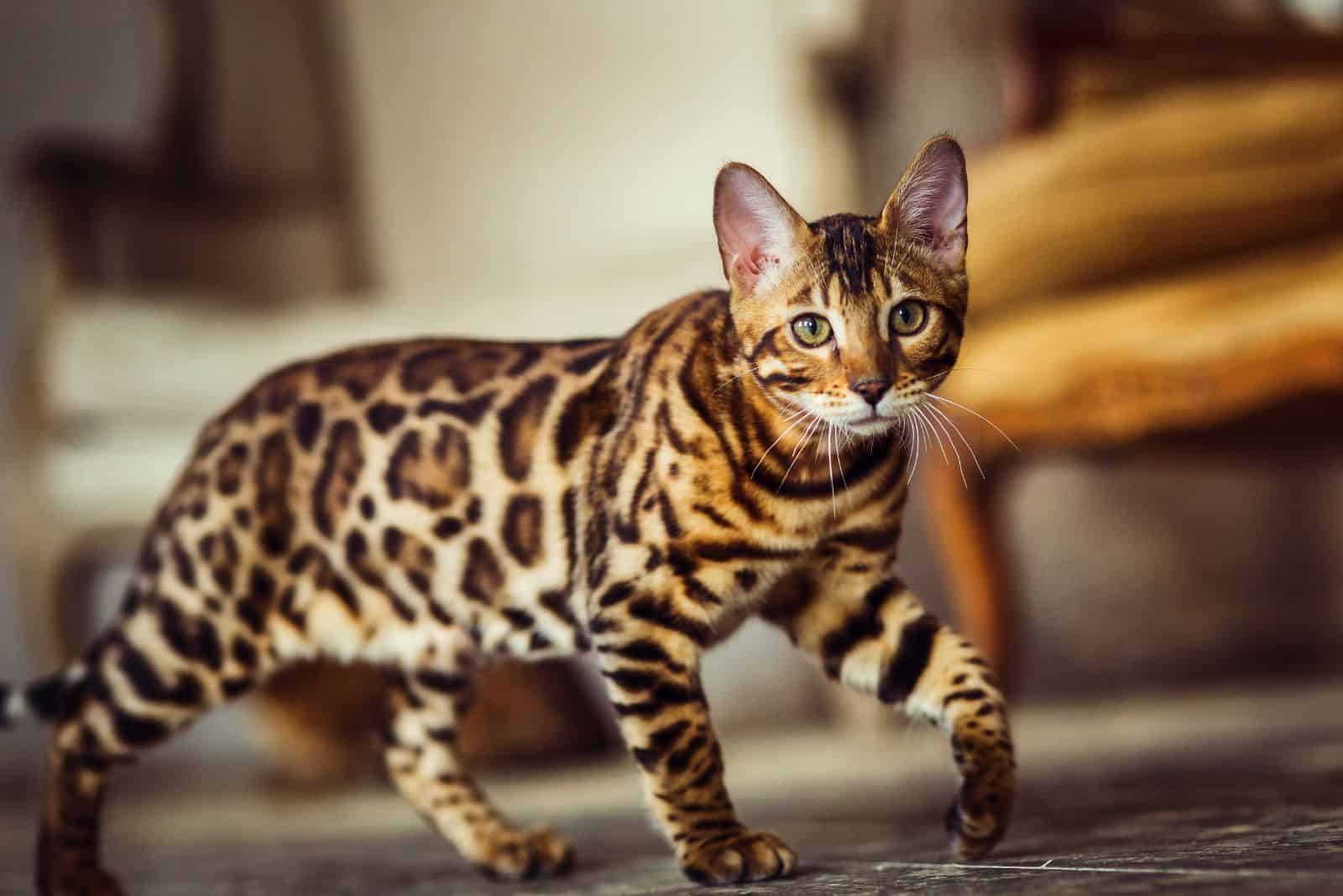
Earlier in this article, you learned about hypoallergenic black cats. Now, let’s look at the most hypoallergenic breeds, no matter their coat color.
Those cats would be:
🐾 Sphynx cats
🐾 Siberian cats
🐾 Devon Rex
🐾 Cornish Rex
🐾 Bengal
🐾 Balinese cats
🐾 Oriental Shorthair
🐾 Abyssinian
🐾 Javanese cats
🐾 Burmese
🐾 LaPerm
🐾 Ocicat
These breeds of cats are all domestic cats which can be a good choice for some allergy sufferers. However, you’ll only know how your body reacts to the presence of a particular cat once you’ve spent some time with a cat of a specific breed.
Therefore, before getting a cat, please find a way to spend some time around them first. For example, maybe your friend has a cat of the same breed you want to get. Kindly ask them if you can spend some time around their cat; I’m sure they will be more than happy to help you!
10 Tips On Reducing Cat Allergy Symptoms While Owning A Cat
If you’re not overly sensitive to cat allergens, it’s possible to have an enjoyable life with a pet cat. However, the presence of a cat doesn’t come without compromise.
You need to follow guidelines that help you keep your cat allergen exposure to a minimum. This will effectively lead to a decrease in symptom severity and, hopefully, prevent symptoms from arising in the first place.
🐾 Avoid petting your cat too much. Cat hair and saliva contain allergens that you’re supposed to avoid, and by petting your cat, you’re directly exposed to them.
🐾 Wash your hands after your cat licks you, or you’ve been petting them. Washing your hands thoroughly is the best way to eliminate allergens.
🐾 Have your cat groomed often. Introduce weekly brushing and try having someone else do this task for you so you’re not directly exposed to loose cat hair.
🐾 Vacuum often and clean wooden floors. Cat dander and hair can be found anywhere in the house, so vacuuming and cleaning floors is a good way to lower their levels in the home.
🐾 Don’t clean the litter box yourself. Cat’s litter box contains urine, hairs, and dander, and all three of these contain the cat allergen Fel D1.
🐾 Invest in a HEPA air purifier. This air purifier (or other similar ones) will efficiently lower the levels of airborne cat allergens.
🐾 Get rid of all carpets you can afford to get rid of. Carpets are known to trap everything that lands on them easily, so they’re also trapping cat hair and dander.
🐾 Don’t let your cat stay in your bedroom for extended periods of time. The rooms your cat spends most of their time in will have a lot of allergens in them. Make sure your bedroom is not that room.
🐾 Use prescribed allergy medication. It’s always a good idea to talk to your doctor about how you can reduce allergy symptoms using medication.
🐾 Inform yourself about allergy shots. Those injections are designed to reduce a patient’s allergy symptoms or completely stop them.
In Conclusion
Are black cats hypoallergenic? The simple answer is that some are, but most aren’t.
Whether a cat is hypoallergenic depends solely on the cat’s breed and levels of allergen secretion. Factors such as a cat’s coat length and color do not correlate with allergen production.
Therefore, if you’re an allergy-sufferer and choosing a hypoallergenic cat to adopt or buy, focus on the cat’s breed and not its physical appearance.
Even allergy-prone individuals can be cat owners with some adjustments to their habits. They should limit their exposure to cat allergens as much as possible.
Following guidelines such as washing their hands often, not having a lot of carpets, and having an air purifier can help them be sneeze-free cat owners!
Related Articles:
Are Ragdoll Cats Hypoallergenic? Tips For Allergy Sufferers
Why Say ‘Hypoallergenic Munchkin Cats’ If It’s Not Possible?
Are Siamese Cats Hypoallergenic? Here’s An Explanation
Like this post? Share or pin it for later!
